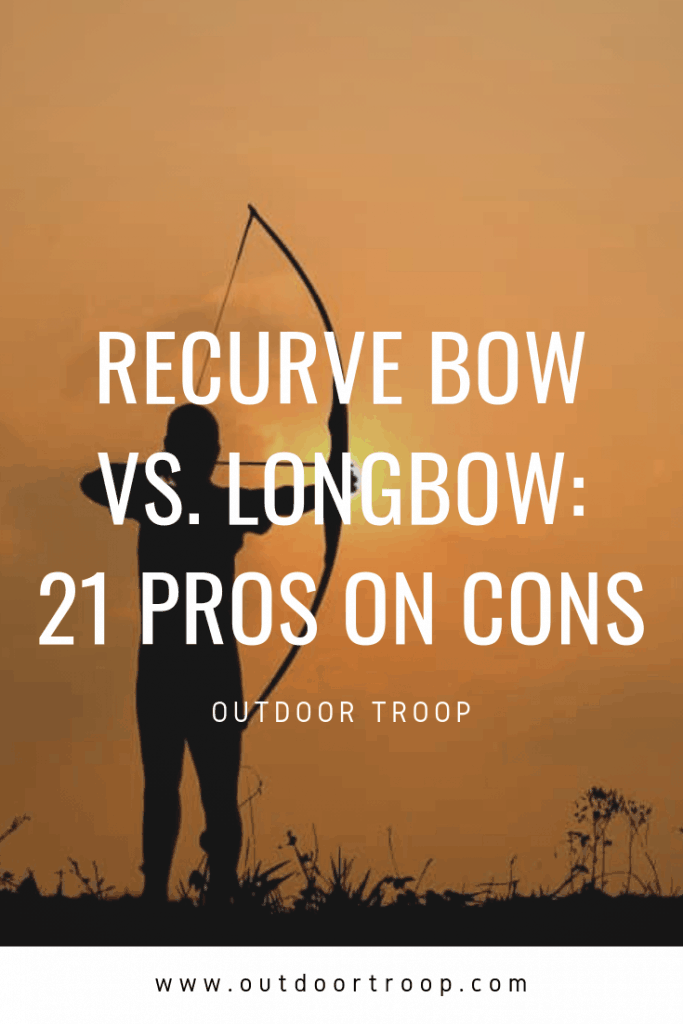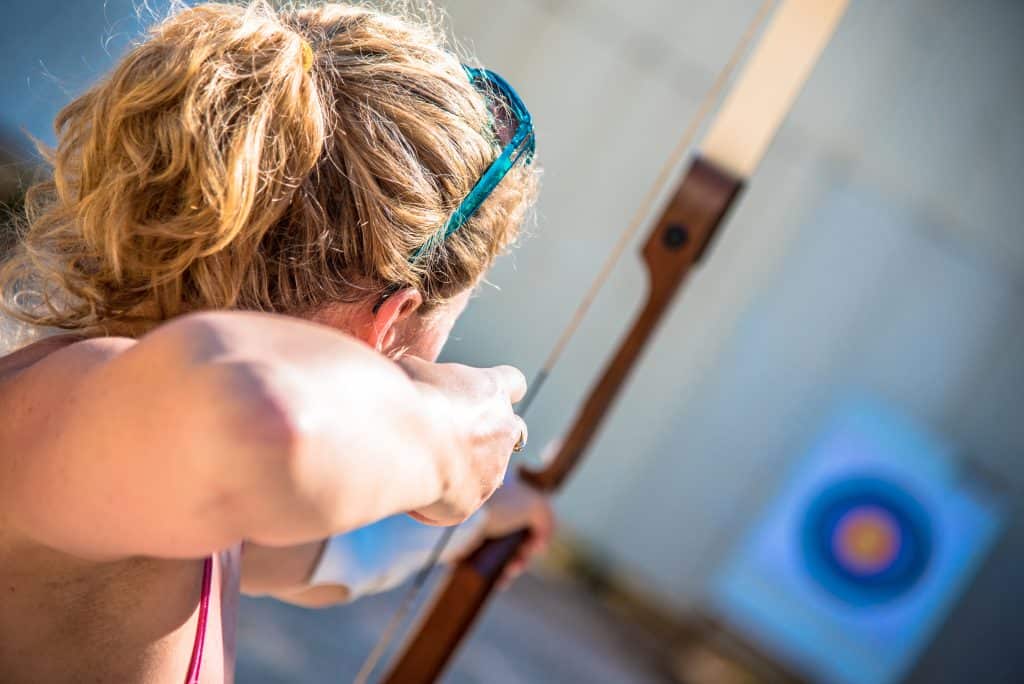
If you are looking to buy a new bow, you may know that there is an incredible amount of different types of bows to choose from. You may think that most bows are the same, but in reality, there are so many differences between them!
If you are interested in more traditional models of archery and traditional archery styles, then you might have frequently seen two types of bows: recurve bows and longbows.
Both of them look very similar, so what’s the difference? You would be surprised that these two bows are like night and day with their different styles and capacities for shooting.
Most of the differences come from the difference in shape. If you’ve noticed, longbows have a large half-moon or “D” shape or curvature to the bow. However, recurve bows are often said to have a shape similar to a “3.” The different shape of these two bows has a huge impact on performance and shot capacity.
If you’re a beginner to archery, all the little differences that you normally wouldn’t think about might be surprising, and the fact that they actually make a big impact on the way you shoot, how accurate of a shot you make, the ease at which you make the shot, where you shoot, etc.
Yes, there’s actually quite a lot.
Whether you’re a beginner to the sport or you’ve been through the ropes many times, this article will go through 21 of the pros and cons of these two bows, and hopefully with this information, you’ll become more familiar with these bows, and hopefully understand more fully what kind of bow fits your shooting style.
Longbow Pros:
- Beginner-friendly
- Easier Release
- Stealthy Shot
- Tall Archer’s Friend
- Historical Feel
#1 Longbow Pro: Beginner-friendly
If you’re a beginner, it may take a little while in order to get used to the feel of the bow and develop proper shooting form. That’s totally normal, don’t worry!
However, sometimes in the beginning while you’re learning the correct shooting form and posture, poor form can cause damage to the bow, as well as affect the shooting accuracy of your arrows.
The longbow is technically thinner than the recurve bow width-wise, but the actual body of the bow is thicker and much heavier.
Recurve bows get their name from the tips of the bow that curve away from the archer, and the body of the recurve bow is not as deep as the longbow. Because recurve bows are thinner than longbows, it’s not hard to twist the tips of the bow, connected to the limbs of the bow, especially if you have poor form.
Twisting the bow’s limbs can make your arrows fly not as straight as they could have been. Which can make you feel less confident in your fledgling archery skills, even if it’s not necessarily your fault!
It takes a lot of experience and skill to avoid twisting your recurve bow in order to get the most precise and accurate shot.
But since it’s near impossible to twist the limbs of the longbow, due to its strong body, it makes it a much more simple ordeal to shoot arrows straight. That’s one of the biggest reasons why the longbow is much kinder to the amateur archers.
#2 Longbow Pro: Easier Release
Another reason that the longbow is a user-friendly and beginner-friendly bow, is that the string release is much easier and more kind to your fingers.
Because the longbow is so long, the energy contained within the string is more spread out, versus a shorter bow with a shorter string, therefore having more friction within the bow.
So when you pull on the string, there’s less friction going on between the string and your fingers, which can be helpful when you’re first starting out and aren’t used to the bowstring.
You have less tension on your fingers when the bowstring is drawn at full-length, which then leads to a more smooth release of the bowstring from your fingertips. The longbow is altogether much more gentle on the archer.
#3 Longbow Pro: Stealthy Shot
If you were to compare the recurve bow and the longbow, then you might notice that the shape is different.
What causes the shape to be so different is the curvature of the tips of the bow in relation to the string of the bow.
The end of the recurve bow has curved tips, bending away from the string, as mentioned before this results in a “3” shape. However, the bowstring is still touching the limbs of the bow.
If you look at the structure of the longbow, then you’ll notice, first of all, that’s long, then secondly that unlike the recurve bow, the bow is in a half-moon curved shape.
The bowstring also barely touches the limbs of the bow!
Because of the separation of the string from the body of the bow, there is less friction and therefore less vibration, which causes the loud “twang” that is normally heard when firing the arrow.
The longbow is comparatively quieter and stealthier than a recurve bow. If you are looking for a much quieter bow, maybe something that will cause less noise while you’re hunting in the woods, then the longbow might be just what you’re looking for.
#4 Longbow Pro: Tall Archer’s Friend
If you happen to be an archer of a particularly large size, then sometimes you may feel awkward with normal or smaller-sized bows. Shorter bows are much more difficult to shoot and feel clumsier. It may take more upper-body strength and power to draw the bow back to its full draw-length.
So if you’re feeling awkward and clumsy with your stubby bow, then the longbow is the saving grace that you’ve been hoping for.
Longbow lengths depend on the draw-length, and the smaller longbow’s start from 64 inches, and go up to as long as 72 inches!
Depending on the strength of your draw muscles, you can get a longbow as tall as you are!
If you really want to get a long bow, you even want to try the Japanese yumi, which ranges from 72 to a whopping 96 inches! But that’s for another article.
But like as I mentioned before, because of the increased stability of the body of the bow, shooting longer bows are easier in general. The strength required to pull back can vary, but in most cases, the longer the better.
#5 Longbow Pro: Historical Feel
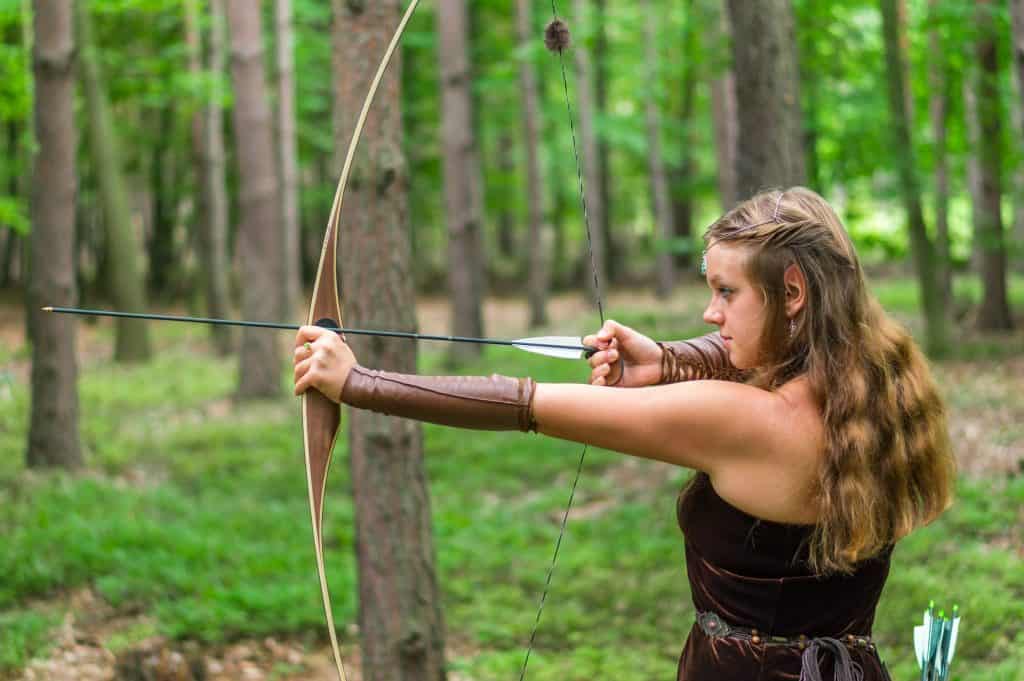
Another key point for longbows where they win is their historical build and aura that they give off.
Maybe you might have started becoming interested in archery because you were inspired by pop culture figures or movies, like for example, Katniss Everdeen in the Hunger Games, Merida in Brave, Hawkeye in Marvel, Legolas in Lord of the Rings, etc., etc.
There are a lot of cool people that do archery.
Yes, you can be as cool as them too.
So maybe you want to have a look like portrayed in the movies, like a bow that looks like it was used in medieval times.
Or maybe you’re interested in more traditional archery or the history of archery and the evolution of the bow.
Longbows were the most commonly used weapon for thousands of years and were used by both hunters and warriors.
If you wanted to feel more connected to the archery of the past and the styles that were used by warriors and hunters way back when then the longbow is a no-argument winner for you.
Longbow Cons:
- Hand Shock
- Less Mobility
- Less Speed
- Adjusting Trouble
- You Can’t Use It Everywhere
- Simplicity (also a pro?)
#6 Longbow Con: Hand Shock
We’ve already discussed how the longbow’s heaviness and thickness create more stability and precision when shooting. It can make it easier to wield and to shoot for those who lack strength or proper shooting form.
However, while that is a great part of the longbow, it can also cause some problems. Aka hand shock. According to ArcheryBoss , “hand shock is the vibration of the bow caused by the residual energy left after loosing an arrow.”
ArcheryBoss explains that when the tips of a bow are heavy, the energy for the shot is mostly stored in the limbs of the bow itself. When an arrow is fired, then the energy stored in the bow will mostly transfer into the arrow, causing it to propel forwards.
However, the leftover energy will ricochet back and into the bow and send vibration throughout your body.
You may think of it as the kickback that occurs from a gun once you’ve fired it, that sometimes hurts if you aren’t properly prepared or holding it to your body correctly.
Because longbows aren’t as flexible as recurve bows and have a heavier body, sometimes the hand shock can either come as a surprise or be a deterrent to some archers buying one.
#7 Longbow Con: Less Mobility
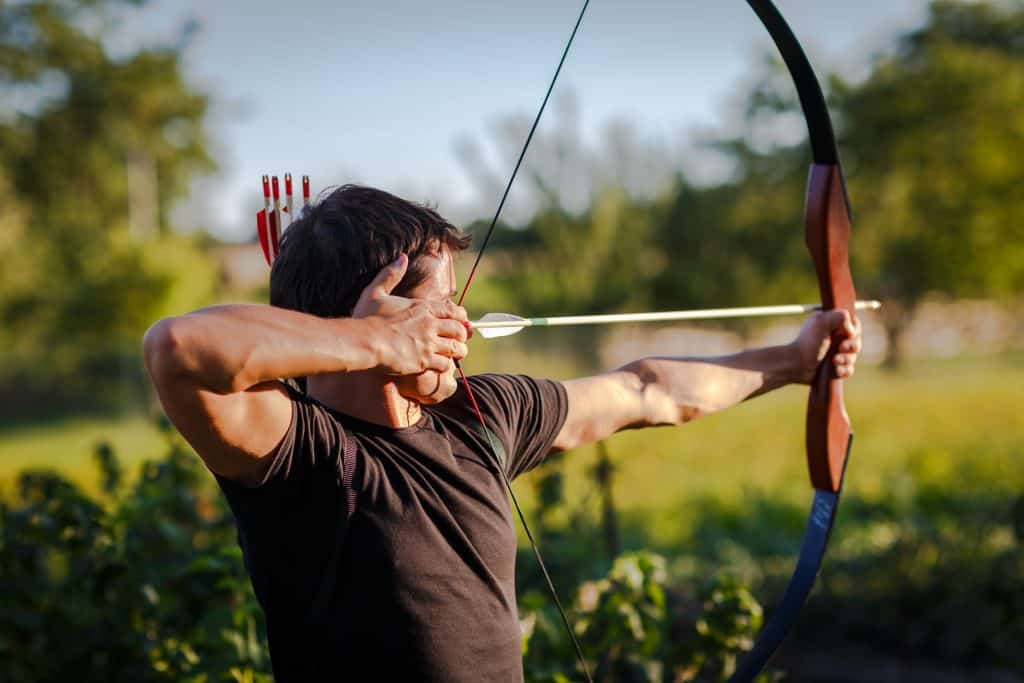
The length of the longbow is where it got its name, as well as why it’s such a unique bow that some archers prefer. However, the immense length of the longbow can also make it a little inconvenient.
If you’re interested in frequent bow-hunting, first of all, while traditional bows can be used, they’re not the most precise bows or even the easiest to hunt with. That’s when we might discuss compound bows, but for the sake and purpose of this article, we won’t.
But if you think about it, that the longbow may not be the most convenient bow to carry with you while you’re hunting, especially if you’re ground-hunting.
Since the longbow is so large, if you’re looking to be clambering over trees, roots, rocks, and into small or tight spots, you can probably imagine that the longbow is not the most ideal bow for you to be taking with you.
In addition to hunting, just carrying it around, in general, is inconvenient, and because of its large size and heavier weight, even putting it in your car can be a slight pain in the neck.
#8 Longbow Con: Less Speed
While the longbow has heavy tips that produce most of its energy, it isn’t developed like the recurve bow to produce the same amount of energy and power.
Obviously, because the longbow is much stiffer and not as flexible as its counterpart, its ability for shooting arrows at high speeds is limited.
In addition to this, because the energy in the bow is spread out along the length of the bow, there is less gathered energy that can result in a much speedier shot.
While it’s easier to prepare and shoot, the speed at which it fires arrows may not be as speedy as you want them to be, especially if you are bow-hunting and have a short window of time where you need to shoot quickly.
#9 Longbow Con: Adjusting Trouble
Sometimes when you’ve bought a bow, the draw weight might be either too heavy or too light for you, and you’ve realized that you made a mistake or that your appropriate draw weight is much different than what you thought it would be.
Some bows are adjustable, and some companies will re-adjust or create the bow to fit your appropriate draw weight. Unfortunately, since most of the time longbows are created from a single piece of wood, if you’ve bought the bow, you’re more or less stuck with the draw-weight that it already has.
This may be detrimental for archers that want to work their draw weight up once their muscles have gotten stronger. Some bows you can buy new parts or have the limbs/string adjusted, but with a longbow, once you’ve bought the bow, it’s either stick with that bow or buy a whole new one.
So before you buy your longbow, it’s important for you to know what your correct draw weight is so as to avoid a sticky situation like this.
#10 Longbow Con: You Can’t Use It Everywhere
While longbows were used by nearly everyone for a thousand years and until pretty recently, they’re not as widely used in our current everyday archery situations.
While it may be kind of sad to those longbow die-hard archers, because the longbow isn’t used as much as it was before, often competitions don’t have longbow sections of the event.
Sometimes they will have special ranges or courses that are meant exclusively for longbows in competitions, but sadly, longbows are not as popular as their fellow counterparts like the compound and the recurve bow.
#11 Longbow Pro/Con: Simplicity
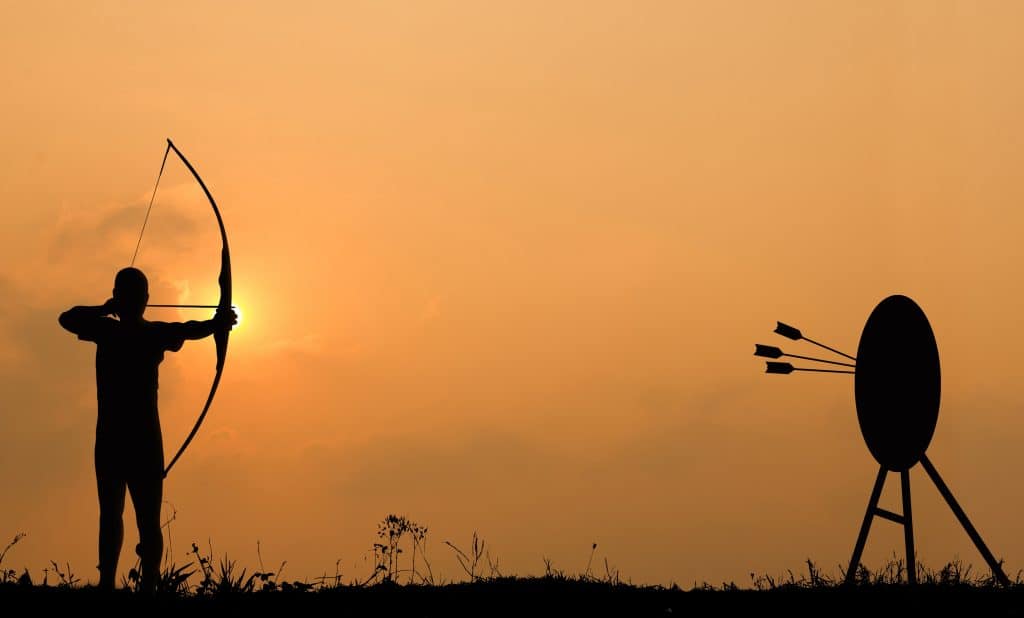
Like I said before, the longbow has been used long before anyone even thought about making a recurve bow, and honestly, the design hasn’t changed much since the days of old when it was used.
The longbow is generally what you might think of when you think of archery, with a very simple structure and design.
But that can also be part of the appeal.
Unlike compound bows, with a set of pulleys, or a recurve with recurve tips, sights, etc., all the fancy gadgets, the longbow normally consists of just three things.
A bowstring.
The bow itself.
And an arrow rest.
That’s it.
So if you’re into all the cool new gadgets and gigs that can come with archery, you might want to look into a different style of bow.
Another problem with the simplicity of the longbow is that it may not be as powerful or accurate as its more advanced counterparts. So if that’s a concern, maybe try something different.
But if you are into the traditional and uncomplicated beauty of the longbow, then feel free to try it out.
So this can be a pro, or a con. It just depends how you see it.
Recurve Pros:
- Exceptional Speed
- Increased Mobility
- Easily Adjusted
- Buying Accessibility
- You Can Use It Everywhere
- A Challenge
- Modern and Traditional Styles
#12 Recurve Pro: Exceptional Speed
So we’ve mentioned a little bit that the recurve bow has this special 3-shape that makes it so different from the longbow. You may be wondering, why is that important?
Well, it just so happens that this unique shape is what makes the recurve bow so much more special and so coveted in the archery world.
You see, the curved tips of the recurve bow is why it’s called a recurve bow.
The curved tips are able to hold more energy, which then pushes more energy into the arrow. This allows the arrow to be shot at a much higher speed than the longbow normally could.
The recurve bow beats the longbow in the case of speed by a long shot.
#13 Recurve Pro: Increased Mobility
Something else that makes the recurve so unique is its convenience.
If you think about the longbow, you know that the bow itself is very, very long. Sometimes the length of the bow can be over six feet – sometimes taller than the archer themselves.
For those archers who are interested in using their bow for hunting, if you think about the large size of the longbow, you probably don’t want to take it with you for lack of convenience.
However, the recurve bow is much smaller and designed to be more easily mobile. The bow itself is actually much thinner than the longbow, making it a much lighter option, and much easier to take with you in your car or on your hunting trip.
#14 Recurve Pro: Easily Adjusted
Going along with the previous section, the recurve bow is actually more convenient than just its small size and lightweight.
The recurve bow has been developed to address some of the concerns and problems that the longbow had, and one of the issues was the ability to transport it easily.
Now, there is the matter of the size and the weight of the bow, but in addition to this, many recurve bows can actually be taken apart.
You can often break the bow down to the two limbs, the arrow rest, and the bowstring. This makes it easier to transport and store, but also, you can often exchange the parts for different ones as you get stronger.
As your draw muscles get stronger, often times you can replace the limbs of the bow with different limbs of different weights so that you can continue the challenge of your bow and continue getting stronger and stronger. Many companies also offer customizable weights for recurve bows.
In addition to this, if you end up breaking one of the limbs of your bow, unlike a longbow, which once broken, is broken for good, you can replace the parts of the recurve bow, versus buying an entirely new bow.
#15 Recurve Pro: Buying Accessibility
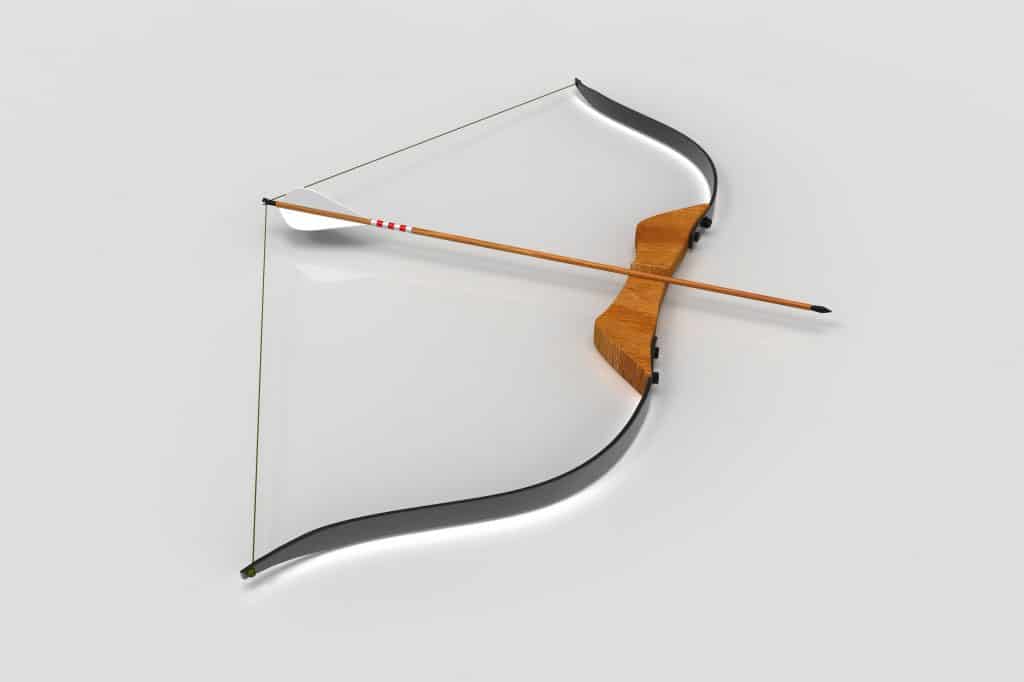
The recurve bow is incredibly popular and used by many, because of its convenience, versatile design, and high-speed shooting.
Because of the high demand, the recurve bow is almost always available to buy anywhere. You can buy them on Amazon, at an archery store, anywhere.
#16 Recurve Pro: You Can Use It Everywhere
Compared to the longbow, which because of the lack of high demand like the recurve bow, it may be difficult to find the kind of bow or style that you want, not to mention spare parts or maintenance supplies for the bow.
While in the past, the longbow was the most popular option for archers, recently, the recurve has really been in style and in high demand for today’s archers.
Because of its popularity and high usage currently, there is always a spot or a place for recurve archers. Events, tournaments, clubs, archery ranges, etc. Recurve can do it all.
Which can be really convenient, and maybe a little less stressful.
If you’re going to an archery range that you’ve never been to before or wanting to participate in competitive archery, you are guaranteed that there is a spot for you to use your recurve bow.
Interestingly, the Olympics also only allows recurve bows in their competitions. Since its one of the fastest and most accurate bows, and also a more accurate measure of skill, the recurve reigns king at the Olympic arena.
#17 Recurve Pro: A Challenge
The recurve is one of the fastest and most accurate bows out there on the market. It’s used in the Olympics and so many other tournaments and favored by many archers.
However, the recurve can be more of a challenge to shoot than some other types of bows.
It requires more skill and training to shoot, so to the archer who’s serious about getting into the sport, competitive archery or target archery, you might want to take a stab at the recurve bow.
Using the recurve bow and training yourself with it will help improve your abilities and skills as an archer.
#18 Recurve Pro: Modern and Traditional Styles
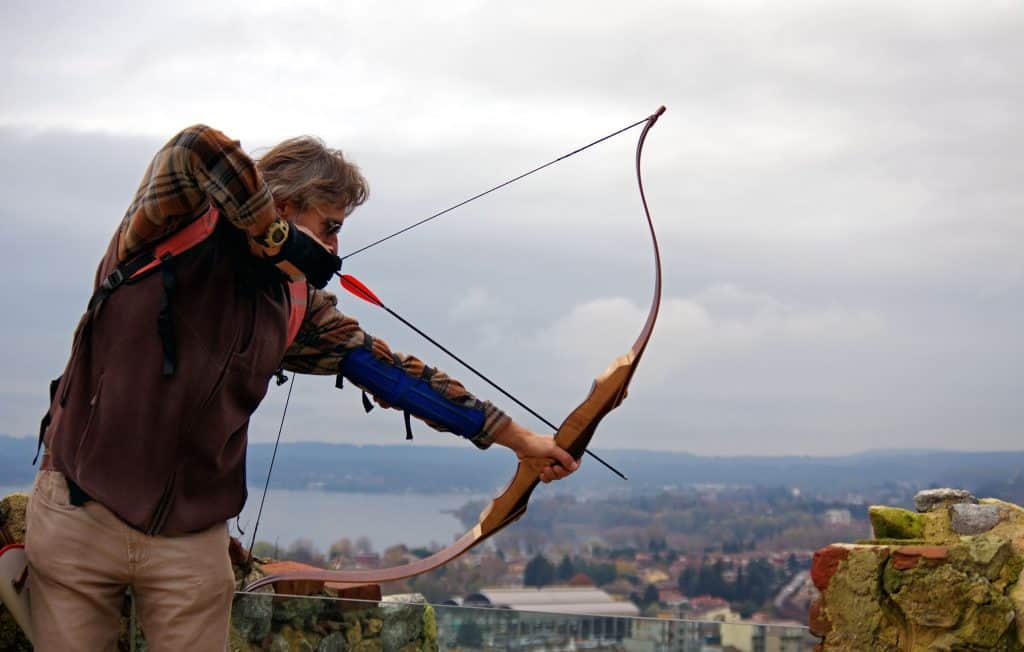
There are many different types of archers with different styles and different preferences. Some like their bows black and mysterious, some like their bows camoflauge-style, and some like the rustic traditional look.
Luckily for all these different types of archers, there is a recurve bow in every type of style!
Most of the time the take-down versions of recurve bows don’t come in a traditional style, and there is some debate as to the aesthetic appeal of the take-down models versus the single piece styles, but since there is so much to choose from, you can pick the style and model that most appeals to you!
Recurve Cons:
- Tricky Shooting
- Loud Shots
- Long Distance Shooting
#19 Recurve Con: Tricky Shooting
This is probably the main problem that people have with recurve bows, but unfortunately, sometimes the recurve bow can be difficult to shoot.
The recurve bow is thin and lightweight, which makes it easier to hold, however, not so much easier to shoot.
Because the recurve bow is short and thin, it holds a lot more energy in one spot, versus if it were to be a longer bow who’s energy is spread out along the bow. Therefore, it takes more energy and strength to draw the recurve bow correctly.
Lacking proper upper body strength can make it difficult to shoot at certain times, and sometimes improper posture can cause string torque.
String torque is when you grip the bowstring improperly, which then causes the bow to spring back at you once you’ve released the arrow.
String torque can greatly affect performance and accuracy of the arrow, and potentially be damaging to you and your bow.
#20 Recurve Con: Loud Shots
If you notice on a recurve bow, the string of the bow touches the upper and lower limbs. If you compare that to a longbow, the bowstring is slightly touching the body of the bow, but mostly de-attached.
Because the string is de-attached from the body of the longbow, this makes the string slap almost entirely silent.
However, because the string on the recurve bow is closely attached to the body of the bow, this creates a loud string slap.
So if you’re looking for a more quiet or stealthier bow to shoot with, you might want to avoid the recurve.
#21 Recurve Con: Long Distance Shooting
The recurve is greatly prized because of its fast shooting abilities and convenience, but unfortunately, not as great from long distances.
Like we discussed before, it is much more difficult to shoot the recurve bow than the the longbow, because of its shorter length and lighter weight.
Because of this, it makes the bow less accurate and therefore especially more difficult to shoot accurately at long distances.
Because of this, hunting from long distances or shooting especially far targets might be more difficult.
There you have it! After reading this exhaustive list of pro and cons of the two different types of bows, hopefully you were able to understand a little more about these bows, and maybe which one you would be interested in buying in the future! Do you prefer the longbow or the recurve?
Happy shooting!

